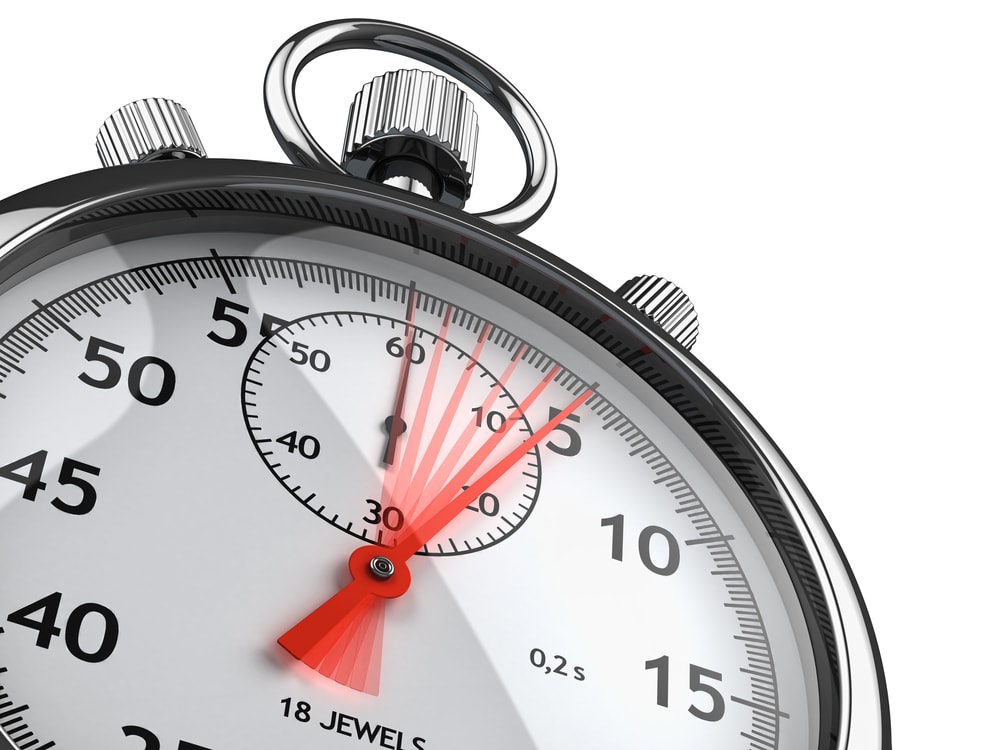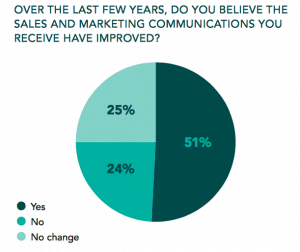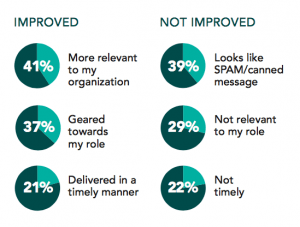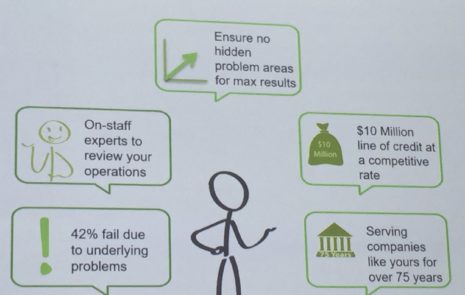
To break through, keep your message short and sweet
To hook your audience quickly, make your message short and sweet. That’s the key to a breakthrough message.
Make your message quick
Short marketing messages get to the gist fast – in 7 seconds, 23 words or less.
Why? Seven seconds is the average length of a sound bite when a company’s spokesperson gets quoted in news media. And 23 words is the average length of sentences in news media, so people are conditioned to expect it.
In 7 seconds, a great marketing message delivers your one main idea or home message, backed up by 3 positive points that prove it.
Each message element has a different job to do:
- The home message answers the audience’s first question first — what’s in it for me? (WIIFM?)
No matter who your audience is, this is the first thing people want to know. If you don’t say what’s in it for them, you lose their attention up front. - Positive points give your audience three reasons to believe your home message. People love to recognize patterns of three, so give them three good reasons to believe your message.
That’s the basic structure of a 7-second Message Map, one home message plus three positive points:

This 1 + 3 message structure is optimal because it minimizes people’s cognitive load and avoids overtaxing human brains.
Hook your audience concretely and emotionally
To make your message even hookier, avoid abstract words. Instead, use concrete words that paint a picture your audience can see in their heads.
Make your message emotional, since people reach most decisions based on emotions, not on rationale. Emotional messages move people to action.
Consistency builds your credibility
To succeed in getting your message to break through, deliver one clear, concise message consistently over a long period of time. Consistency is the key to creating credibility with your audiences.
If your story is constantly changing, it becomes harder for people to believe. That’s why so many politicians struggle.
When your story stays consistent, your credibility grows. A consistent marketing message even makes it easier for customers to recall your message so they act on it when it’s time to decide.
Why? Because consistent messages get stored in people’s place cells, which never run out of capacity – unlike people’s short-term memories.
Make your message sweet
A sweet message instantly answers people’s question, what’s in it for me? WIIFM? It hooks your audience by leading with benefits.
Offer personal benefits
In B2B messaging, offer personal benefits on top of the business benefits. Personal benefits add emotion to otherwise dry and calculated messages. For example:
- The new software saves your business time and makes your work life easier.
- The new network increases uptime, so you get fewer calls on nights and weekends.
- The new facility shortens most people’s commutes, making it easier to recruit new hires and increase employee satisfaction.
Make benefit statements even more believable by adding social proof, such as testimonials, case histories, ratings, rankings, third-party certifications and endorsements in social media.
Delete any element your message that elicits a “Who cares?” or “So what?” response from your audience.
Stay positive
To keep your message sweet, stay positive in the words you choose. Avoid going negative with words like no, not, never, don’t, won’t, and can’t. Here’s why.
As reported in Psychology Today, researchers Andrew Newberg, M.D., and Mark Waldman put people into an MRI scanner and flashed the word “NO” for less than a second.
Suddenly, their test subjects’ brains released dozens of stress-producing hormones and neurotransmitters. The normal functions of their brains were interrupted, impairing logic, reason, language processing and communication. That’s not what you want to do to your audience.
Stay positive! Even in dating apps, positive language is more successful, research found. To improve your odds of success, list what you like, not what you don’t like, friendship coach Danielle Bayard Jackson told The Wall Street Journal.
You catch more flies with honey than vinegar.
Make sure your message is relevant
To ensure your message is relevant to buyers, perform buyer persona research before you create a marketing message. Buyer personas uncover these essential insights:
- The topics buyers are interested in.
- The questions buyers seek answers to.
- The obstacles buyers must overcome.
- The people and media buyers seek out to find answers.
A Dun & Bradstreet (D&B) survey of more than 300 B2B buyers in North America and the UK shows how well sales and marketing messages perform in the eyes of buyers.
About half (51%) of buyers say sales and marketing communications are better than a few years ago. The other half sees no change or says it’s worse.

People want relevant, timely messages
When you dig down to why marketing communications are better or worse than before, it boils down to two issues: message relevance and timeliness, D&B found.
Buyers who see improvements say that today’s communications are more relevant to their organization (41%) and more relevant to their role (37%). And 21% find the communications more timely.
Buyers who see no improvements say they get too many irrelevant communications that look like spam or canned messages (39%). Another 29% say the communications are not relevant to their role, and 22% find the communications untimely.

Keep sales and marketing messages short and sweet
Remember, what Sales wants most from Marketing is better messaging.
Use a Message Map to create a one-page message that every customer-facing employee can use to deliver the message successfully.
A Message Map helps you:
- Overcome buyers’ short attention spans.
- Meet buyers’ need to know what’s in it for them.
- Ensure your message is relevant to each buyer’s company and role.
That’s how you break through with the message, short and sweet!
For more ways to keep your message short and sweet, subscribe to our blog.
Related Posts
Top 100 Content Marketing Question: How do you reach an audience that doesn’t know it needs your content?
Reach an audience – 5 ways to triangulate buyers’ content marketing needs The unspoken question behind this question: Why doesn’t your audience know it...
Make the most of content-marketing videos
Videos as a form of content marketing continue to grow more and more popular. Additionally, as our attention spans become shorter, content marketing videos...
What do you want to be known for?
Here’s a hard question marketers need to ask: What’s the one thing your brand wants to be known for? People will remember only one...
Which marketing message prevails? Quick quiz
If you have 4 potential story lines for your marketing message, which one works best? This quiz question came from author and marketer Tim Riesterer, who made a...





